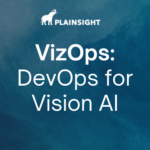This week in AI & Machine Learning: AI policies for US government, FDA AI grant, Fully Driverless Autonomous Vehicles, how to build a dataset for computer vision, pytorch lighting, Tensorflow, fastai, and more.
Artificial Intelligence News:
Artificial Intelligence Improves America’s Food System
As far as I know, this is the first official artificial intelligence post on the USDA.gov website, which is very exciting! Hopefully it’s the first of many! Scientists, funded by a $20 million grant from the USDA’s National Institute of Food and Agriculture, are working to create the next generation of food systems using artificial intelligence.
Are Fully Driverless Autonomous Vehicles Here?
Although several companies have been operating fully autonomous vehicles (usually with a safety driver still behind the wheel) for a while now, this week we’ve seen just how close we may be to having self driving cars in many more places. Read why Oliver Cameron thinks this has been a game-changing several weeks for not only his company (Voyage), but the entire self-driving industry.
🚖 Join me for a ride in a fully driverless @voyage robotaxi, with no Safety Driver!
— Oliver Cameron (@olivercameron) December 10, 2020
This is a meaningful moment for @voyage, and a glimpse of an exciting future not too distant.
🎥 The full video is unedited, with commentary on how our technology works: https://t.co/L0bDgpLmRa pic.twitter.com/Y4L8BlEFTG
Promoting the Use of Trustworthy Artificial Intelligence in Government
The U.S. government has set guidelines for artificial intelligence adoption and establishing trustworthy AI within Federal Agencies. This contains outlines for: principles for the use of AI in government, common policy for implementing P\principles, catalogue of agency use cases of AI, and enhanced AI implementation expertise.
If you’re interested in reading more about AI development and government involvement, I suggest checking out the book “AI Super Powers” by Kai-Fu Lee. He offers some really interesting opinions on the AI ecosystems of the world.
Developer Tools & Education:
An Introduction to Computer Vision for Object Detection Workshop
This workshop covers high-level intuition + applications of computer vision, practical examples how to create your own computer vision datasets, and how to train your own object detection machine learning mode.
PyTorch Lightning 1.1 Release
Pytorch Lighting 1.1 is out with some major updates! The biggest of which is probably Model Parallelism Training.
TensorFlow 2.4.0-rc4 Release
This update features experimental support for asynchronous training of Keras models, moves mixed precision out of experimental phase, and more.
Fastai Fastcore 1.3.11 Release
Another update to a great deep learning library–what a week! This update mostly contains minor bug fixes.
Amazon releases a bunch of new machine learning tools
With AWS re:invent happening this week, we’ve seen quite a few machine learning tool releases from Amazon.
Interesting Podcasts & Interviews:
The Past, Present, and Future of AI Services | SDS
Listen to this conversation with Rama Akkiraju to learn about IBM, AI services, ROI on AI development, AI ethics and more.
Behind the Scenes at NeurIPS with NVIDIA and CalTech’s | NVIDIA
Catch up with Anima Anandkumar and learn about her team at NVIDIA getting seven research papers published this week at NeurIPS!
Benchmarking ML with MLPerf| TWiML
Join Peter Mattson to learn about MLCommons, MLPerf, best practices of getting a machine learning model into production and more.
Scaling Video AI at RTL | TWiML
Explore MLOps with Daan Odijk and overcome challenges of scaling video AI services.
Notable Research Papers:
Some of the interesting machine learning papers published this week.
- Fact-Enhanced Synthetic News Generation
- Few-shot Image Generation with Elastic Weight Consolidation
- Synthetic Data: Opening the data floodgates to enable faster, more directed development of machine learning methods
- The Lottery Ticket Hypothesis for Object Recognition
- Semantic Image Synthesis via Efficient Class-Adaptive Normalization
- Spatial Language Understanding for Object Search in Partially Observed Cityscale Environments
- You Only Need Adversarial Supervision for Semantic Image Synthesis
- Super-Selfish: Self-Supervised Learning on Images with PyTorch
- Understanding Attention: In Minds and Machines
About Plainsight Technologies
Plainsight dramatically reduces the cost and complexity of AI-powered computer vision across many verticals and enterprise use cases, including manufacturing, retail, food service, theft, and more. As companies automate their operations with AI and Agents, Plainsight brings vision capabilities to watch and analyze events in the real world and generate structured data for analytics and reporting. Headquartered in Kirkland, Washington, Plainsight Technologies operates as a distributed team, delivering cutting-edge solutions worldwide. To learn more, visit plainsight.ai.




